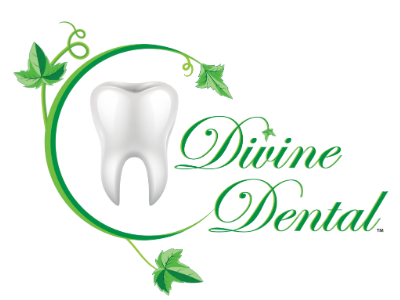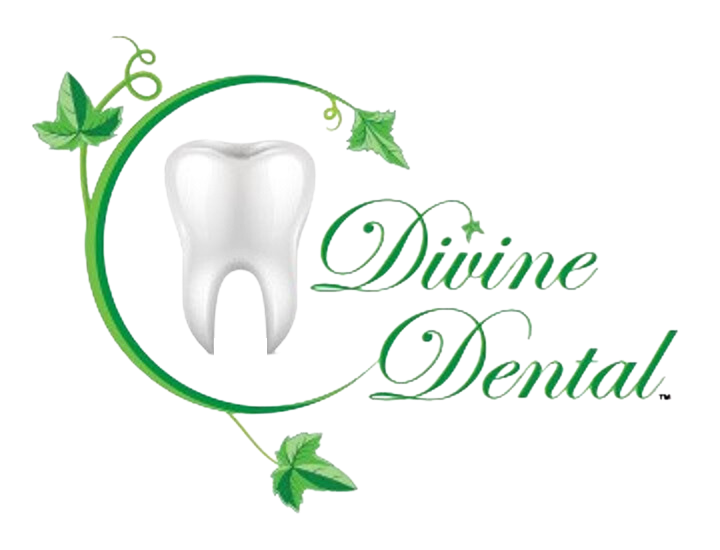What to Do When You Have Tooth Pain: Immediate Relief Tips
Tooth pain can manifest in a variety of ways and can be an unpleasant experience. It may come suddenly or develop gradually over time, presenting as a sharp pain when biting down or a constant, throbbing ache. Understanding the nature of tooth pain is the first step toward finding relief. The specific qualities of your discomfort, such as duration, intensity, and location, can help determine the underlying cause, which can range from cavities and gum disease to a fractured tooth or an abscess.
Seeking immediate pain relief is often the priority for anyone suffering from a toothache. Over-the-counter pain relievers, cold compresses, and saltwater rinses are commonly employed to reduce pain and swelling until a dentist can be consulted. It’s important to remember that while home remedies might provide temporary relief, they do not address the underlying issue that’s causing the pain. A visit to the dentist is crucial for a proper diagnosis and treatment to prevent any further complications.
Key Takeaways
- Identifying the symptoms and causes of tooth pain is essential to treating it effectively.
- Immediate relief strategies can reduce discomfort, but they are not a replacement for professional dental care.
- Regular dental check-ups and proper oral hygiene are key to preventing tooth pain and related conditions.
Identifying Tooth Pain
Tooth pain should not be ignored as it often signifies underlying issues. Prompt recognition and understanding are critical for effective management.
Recognizing Toothache Symptoms
A person may notice a variety of symptoms that indicate a toothache. These can include:
- Sharp pain: This can occur suddenly and can be intense.
- Dull or throbbing pain: This type of pain may be persistent.
- Sensitivity : Teeth may become sensitive to hot, cold, or sweet stimuli.
- Tenderness: Around the affected tooth or the surrounding gums.
- Swelling: Gums near the affected tooth can become swollen.
One can check for these symptoms regularly to help identify if there is a need to seek dental care.
Understanding Causes of Tooth Pain
The causes of tooth pain can range from mild to severe and include:
- Decay: Cavities can expose the sensitive layers of teeth, leading to pain.
- Infection: Bacterial infections can cause pain and sometimes lead to the formation of an abscess.
- Gum Disease : Conditions like gingivitis or periodontitis involve the gums and can contribute to discomfort.
- Injury: Trauma to a tooth may result in acute pain and sensitivity.
Individuals should consider their symptoms in conjunction with these potential causes to determine the next steps in seeking dental care. Use of a cold compress may alleviate pain and swelling temporarily until professional help is sought.
Immediate Pain Relief
When experiencing tooth pain , swift action with home remedies and over-the-counter solutions can provide immediate relief. These methods are aimed at reducing pain and swelling until professional dental care can be sought.
Home Remedies for Toothache
- Clove Oil : Apply a small amount of clove oil directly to the affected area. Its natural anesthetic properties can numb the pain temporarily.
- Saltwater Rinse : Swish warm saltwater in the mouth for 30 seconds to help disinfect and ease pain. Repeat as needed.
One may also gently floss around the painful tooth to remove any food particles that could be contributing to the pain.
Over-The-Counter Solutions
- Pain Relievers : Nonsteroidal anti-inflammatory drugs (NSAIDs) such as ibuprofen can reduce pain and swelling. Follow the recommended dosage on the package.
| Pain Medication | Function |
|---|---|
| Ibuprofen (Advil, Motrin) | Reduces inflammation and provides pain relief |
| Acetaminophen (Tylenol) | Eases pain without reducing inflammation |
- Fluoride Toothpaste :
Professional Dental Care
Seeking professional dental care is essential when experiencing tooth pain as it may be indicative of underlying issues such as tooth decay, infection, or dental abscess. A dentist can diagnose the cause of pain and provide the appropriate treatment to alleviate it.
When to See a Dentist
A person should consult a dentist if they experience severe, persistent, or recurring tooth pain. Additionally, symptoms such as swelling, fever, pain when biting, and difficulty swallowing or breathing warrant immediate dental attention. These symptoms could indicate an infection that requires prompt treatment to prevent further complications.
- Symptoms Prompting a Dental Visit:
- Severe tooth pain
- Swelling in the mouth or face
- Fever accompanying tooth pain
- Pain when biting or chewing
- Difficulty swallowing or breathing
What to Expect During the Visit
During a dental visit for tooth pain, the dentist will review the patient’s medical history and conduct a physical examination of the mouth. They may also take x-rays to determine the presence of cavities , root canal issues, or tooth decay . Based on the findings, the dentist will discuss the cause of pain and various treatment options.
- Dental Visit Checklist
:
- Review of medical history
- Physical examination of the mouth
- X-ray diagnostics
- Discussion of findings
- Explanation of treatment options
Possible Dental Treatments
Dental treatments vary depending on the diagnosis. Common treatments for tooth pain include:
- Fillings : To address cavities caused by tooth decay.
- Root Canal : To treat infected or inflamed pulp within the tooth.
- Antibiotics : To manage bacterial infections.
- Tooth Extraction : As a last resort for teeth that cannot be saved.
| Treatment | Condition Treated |
|---|---|
| Filling | Cavity/Tooth Decay |
| Root Canal | Infection/Pulp Damage |
| Antibiotic | Bacterial Infection |
| Tooth Extraction | Unsalvageable Tooth |
Each treatment aims to eliminate pain and infection, restore tooth function, and prevent future dental issues.
Understanding Tooth Infections
Tooth infections stem from bacterial invasion that can lead to a tooth abscess, characterized by pus and localized pain. Effective treatment requires prompt professional care.
Symptoms of Tooth Infections
Signs indicative of a tooth infection include:
- Pain: Persistent, severe toothache that can radiate to the jawbone, neck, or ear.
- Sensitivity: A heightened response to hot or cold temperatures or the pressure of chewing.
- Swelling: Inflammation may present itself in the face or cheek, coupled with a feeling of tenderness.
- Fever: An infection often causes a general feeling of malaise and fever as the body battles the bacteria.
- **Pus:**The presence of pus or a foul taste in the mouth suggests an abscess.
- Lymph Node Involvement: Swollen lymph nodes under the jaw or in the neck are a reaction to the infection.
Treatment of Tooth Infections
The approach to treating tooth infections generally involves:
- Drainage: The dentist may need to drain the abscess to remove the collection of pus.
- Antibiotics: If the infection is severe or has spread, antibiotics may be prescribed to help fight the bacteria.
- Root Canal: A procedure to remove the infected pulp and seal the tooth can prevent further infection.
- Extraction: In advanced cases, removing the affected tooth may be necessary to eliminate the infection.
Dentists will also provide instructions for pain management and recommend steps for oral hygiene to support healing and prevent future infections.
Long-Term Health and Prevention

Maintaining long-term oral health is crucial in preventing tooth pain. A focus on daily oral hygiene, routine dental assessments, and protective treatments can significantly reduce the risk of toothaches.
Improving Oral Hygiene
Practicing good oral hygiene is the bedrock of dental health. Individuals should brush their teeth at least twice a day with fluoride toothpaste to remove plaque and bacteria. Upgrading to an electric toothbrush might enhance the effectiveness of this routine. Flossing daily is equally important to eliminate food particles and plaque between teeth where the brush cannot reach.
- Brushing : At least 2 minutes, twice daily
- Flossing : Once a day, preferably before bedtime
- Products: Use a fluoride toothpaste and a soft-bristled toothbrush
Regular Dental Check-Ups
Routine dental check-ups are vital for identifying and addressing oral issues before they escalate. Professionals recommend a dental visit for cleaning and examination every six months. During these visits, dentists can provide tailored advice on improving oral care practices specific to each individual’s needs.
- Dental Check-Up Frequency : Every 6 months
- Services Provided : Examination, cleaning, personalized oral care guidance
- Importance: Early detection and management of dental problems
Preventive Treatments
Several treatments like sealants and fluoride application can be performed to help prevent tooth pain and decay. Dental sealants are a protective coating applied to the chewing surfaces of back teeth to keep food and bacteria from lodging in the grooves. Regular professional cleanings remove tartar buildup, which is not possible through home care alone. Using fluoride toothpaste fosters stronger enamel, resisting decay and preventing toothaches.
- Preventive Treatments : Sealants, fluoride applications
- Outcome : Stronger enamel, reduced risk of decay and toothaches
Understanding Related Conditions

Tooth pain can be an indicator of various oral conditions. This section introduces common related issues that can cause or exacerbate dental discomfort.
Related Oral Problems
Tooth pain often suggests the presence of oral health issues beyond the teeth themselves. For instance, gum disease , also known as periodontal disease , includes conditions like gingivitis , which is inflammation of the gums. If untreated, it can lead to more severe infections and tooth loss. Wisdom teeth issues, such as an impacted tooth — when a tooth fails to emerge fully from the gums — can also contribute to pain.
A sinus infection may cause dental pain due to the proximity of the sinuses to the upper teeth, creating pressure and discomfort. Bruxism , or teeth grinding, commonly leads to tooth pain, as well as jaw pain , and can even cause trauma to teeth over time.
Teeth Development and Issues
During teething , infants often experience discomfort as new teeth emerge. Proper monitoring and care are crucial to ease their pain and ensure healthy dental development. In older individuals, issues with teeth development — such as misaligned or crowded teeth — can result in significant discomfort.
Dental pain may also signal underlying problems with tooth structure or previous dental work, necessitating professional assessment. Good oral hygiene practices and regular dental check-ups can help mitigate the risk of these complications and ensure that any developmental issues are addressed promptly.
Complications and Risks
Ignoring a toothache can lead to severe health issues, while dental procedures to treat tooth pain come with inherent risks. It is essential to understand what could happen if a toothache is not promptly dealt with or if one undergoes dental treatments.
Potential Complications of Untreated Toothaches
An untreated toothache can result in an abscessed tooth , which is a pocket of pus caused by infection. This can lead to:
- Loss of the tooth
- Spread of infection to other parts of the body
Tooth fractures or cracked teeth can escalate to more severe conditions without timely attention. Complications may include:
- Pulpitis : Inflammation of the tooth pulp, which can be reversible or irreversible.
- Infection of the tooth’s nerve, possibly leading to nerve damage .
Risks of Dental Procedures
Dental procedures, while generally safe, carry risks that patients should be aware of:
- Extraction
: Removing a tooth may lead to
- Bleeding
- Infection
- Nerve damage , particularly if the procedure is complex.
- Procedures to repair a cracked tooth
or to address pulpitis
have potential risks like
- Incomplete fracture removal
- Accidental damage to surrounding teeth or tissues.
Treatment Recovery and Aftercare
Effective recovery from dental procedures such as root canal treatment, fillings, or tooth extractions is crucial. It typically involves pain management, ensuring proper healing, and preventing infection. The following subsections outline the key steps for post-procedure care and monitoring the recovery process.
Post-Treatment Care
After dental treatment, it’s essential for patients to follow a dentist’s specific care instructions, which aim to promote healing and prevent complications.
Root Canal & Filling:
- Pain Management : Take over-the-counter pain relievers as directed.
- Oral Hygiene : Gently brush around the treated area and floss with care.
- Bleeding Control : Bite on a gauze pad and change as instructed.
- Swelling Management : Apply an ice pack to the cheek in intervals of 10 minutes.
General Care:
- Diet : Eat soft foods and avoid chewing from the side of the treatment.
- Activity : Limit strenuous activities to reduce bleeding and swelling.
Monitoring Recovery
Observing the recovery process is important to ensure that the affected area is healing properly and to identify any potential issues early on.
- Infection Signs : Regularly check for signs of infection, including increase in pain, swelling, or presence of pus.
- Antibiotics Compliance: If prescribed, take the full course of antibiotics to prevent infection.
- Jaw Pain : Mild jaw pain is normal; however, persistent or severe pain warrants a dental consultation.
- Follow-Up Appointments : Attend all scheduled appointments for professional evaluation of healing progress.
Lifestyle and Home Care Strategies
Managing tooth pain often involves more than just treatments at the dental office; it also includes adopting home care strategies that focus on diet and stress management. These modifications can reduce pain and prevent future dental issues.
Diet and Nutrition
An individual’s diet plays a critical role in their oral health. They should consider:
- Reducing sugar intake : Foods high in sugar can contribute to dental decay. They should limit sugary snacks and beverages to prevent cavities.
- Chew carefully : If experiencing tooth pain, one should avoid hard or sticky foods that require excessive chewing. Softer foods will put less strain on the teeth.
| Foods to Avoid | Foods to Choose |
|---|---|
| Hard candies | Soft fruits |
| Ice | Yogurt |
| Sticky candies | Mashed potatoes |
| Crunchy snacks | Scrambled eggs |
Stress and Oral Health
Stress can indirectly lead to tooth pain by causing habits like grinding one’s teeth, also known as bruxism.
- Bruxism : Individuals should be mindful of teeth grinding , especially during sleep, and consider using a mouthguard if necessary to prevent damage.
- Routine Cleanings : Regular dental cleanings can help prevent issues derived from stress-related oral habits by keeping teeth and gums healthy.
Emergencies and When to Act
When experiencing tooth pain, it’s essential to distinguish between a standard issue and a dental emergency requiring immediate attention.
Identifying Dental Emergencies
Dental emergencies often manifest as symptoms that could indicate serious underlying conditions. A dental abscess, for instance, may present with swelling around the mouth, face, or neck, intense throbbing pain , and fever . If a person experiences difficulty with breathing or swallowing because the swelling extends toward the throat or impacts the ears, these are signs of a potentially life-threatening infection needing prompt action.
Immediate Actions and First Aid
| Symptom | Action to Take |
|---|---|
| Throbbing Pain | Apply a cold compress and take pain medication as per guidelines. Do not place aspirin directly on the gums as it may burn the tissue. |
| Swelling | Seek immediate dental or medical attention, especially if it causes trouble with breathing . |
| Fever and Pain | These signs may indicate an infection . Consult with a dentist promptly to prevent the spread of infection. |
| Suspected Dental Abscess | Do not delay treatment, as an abscess can lead to more severe systemic issues. Visit a dentist right away. |
Remember, any indication of an infection, such as a fever, swelling, or consistent pain, should be treated by a professional to avoid complications.
Frequently Asked Questions
Tooth pain can be distressing, but there are effective ways to manage it before seeking professional dental care.
How can you quickly alleviate tooth pain at home?
Individuals may use over-the-counter pain relievers, such as ibuprofen or acetaminophen, to temporarily reduce tooth pain. Applying a cold compress to the exterior of the cheek adjacent to the aching tooth can also help in minimizing swelling and pain.
What are effective home remedies for a toothache due to a cavity?
Rinsing the mouth with warm salt water can help to disinfect the affected area and reduce inflammation. A cavity-specific remedy includes placing a small amount of clove oil on a cotton ball and applying it directly to the sore area to help numb the pain.
What should be done for severe toothache that prevents sleep?
For a severe toothache disrupting sleep, it is recommended to keep the head in an elevated position to reduce blood pressure in the tooth area. Additionally, one may take over-the-counter pain medication appropriate for nighttime use, adhering to the advised dosage.
How can dental nerve pain be effectively managed?
Managing dental nerve pain may involve avoiding hot or cold food and drinks which can exacerbate the pain, and using dental products designed for sensitive teeth. If pain persists, a visit to the dentist for appropriate treatment is advised.
Are there immediate steps to take for unbearable tooth pain?
If experiencing unbearable tooth pain, one should rinse their mouth with warm saltwater, avoid extremely hot or cold foods, and consider using a pain relief gel specifically formulated for dental use. Visiting a dentist as soon as possible is crucial.
What approaches can one take to mitigate toothache at night?
To mitigate toothache at night, individuals can avoid eating or drinking acidic, cold, or hard foods before bed, use an extra pillow for elevation, and maintain good oral hygiene to prevent pain from worsening. If needed, a pain reliever suitable for night time can be taken according to the product instructions.…



